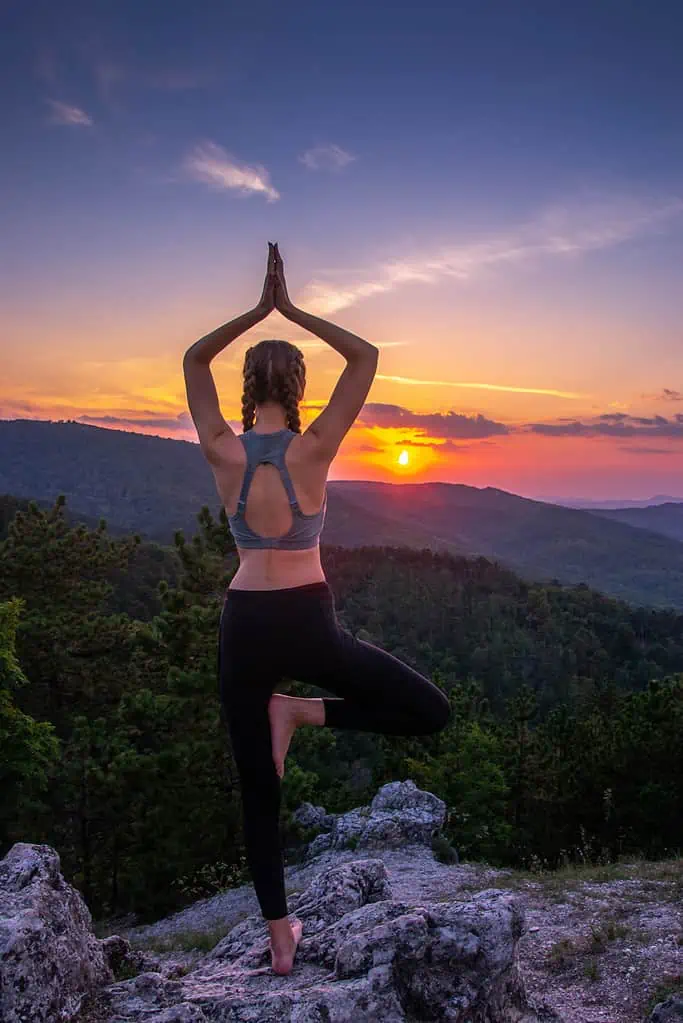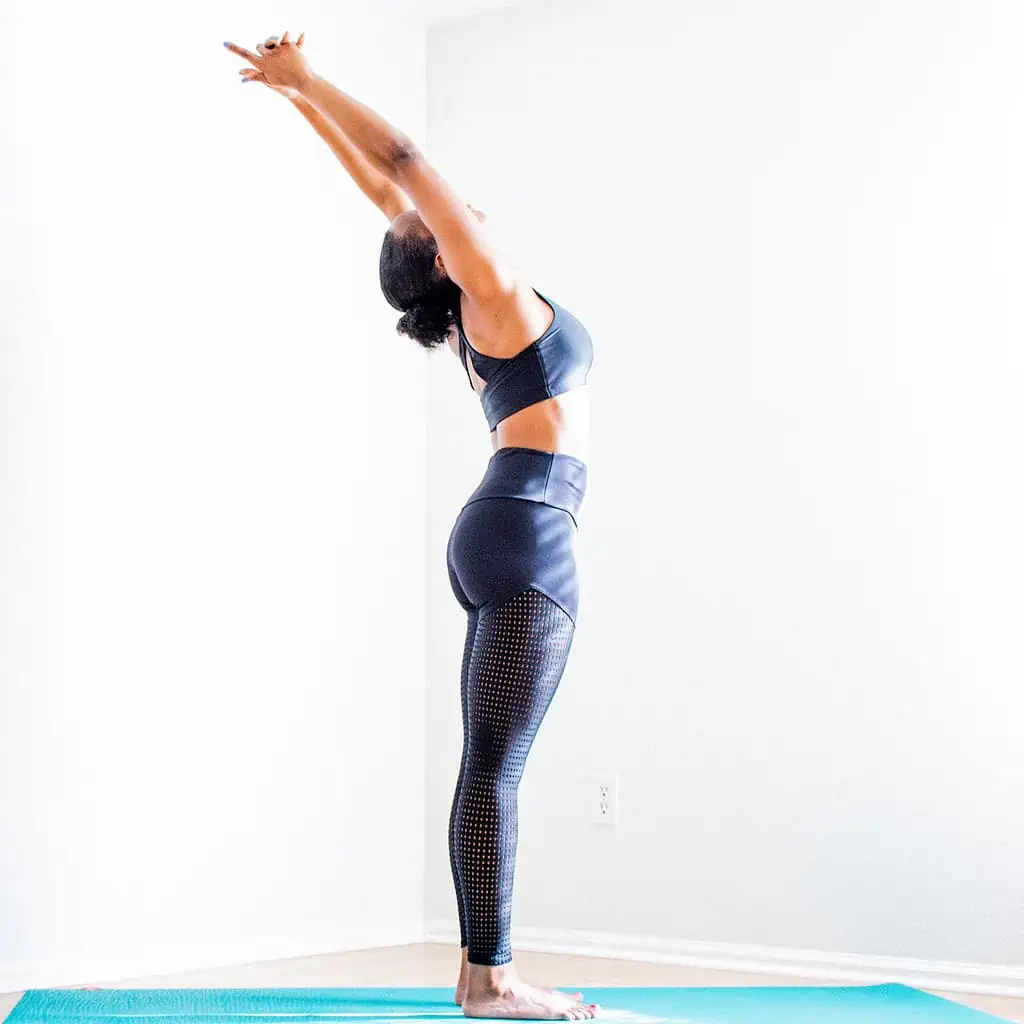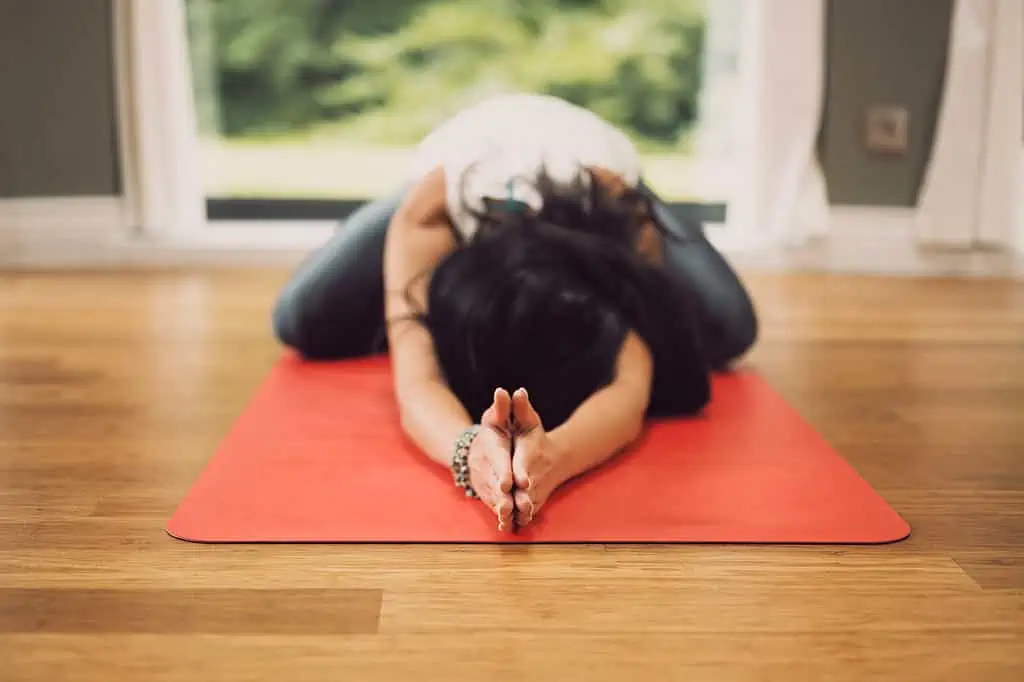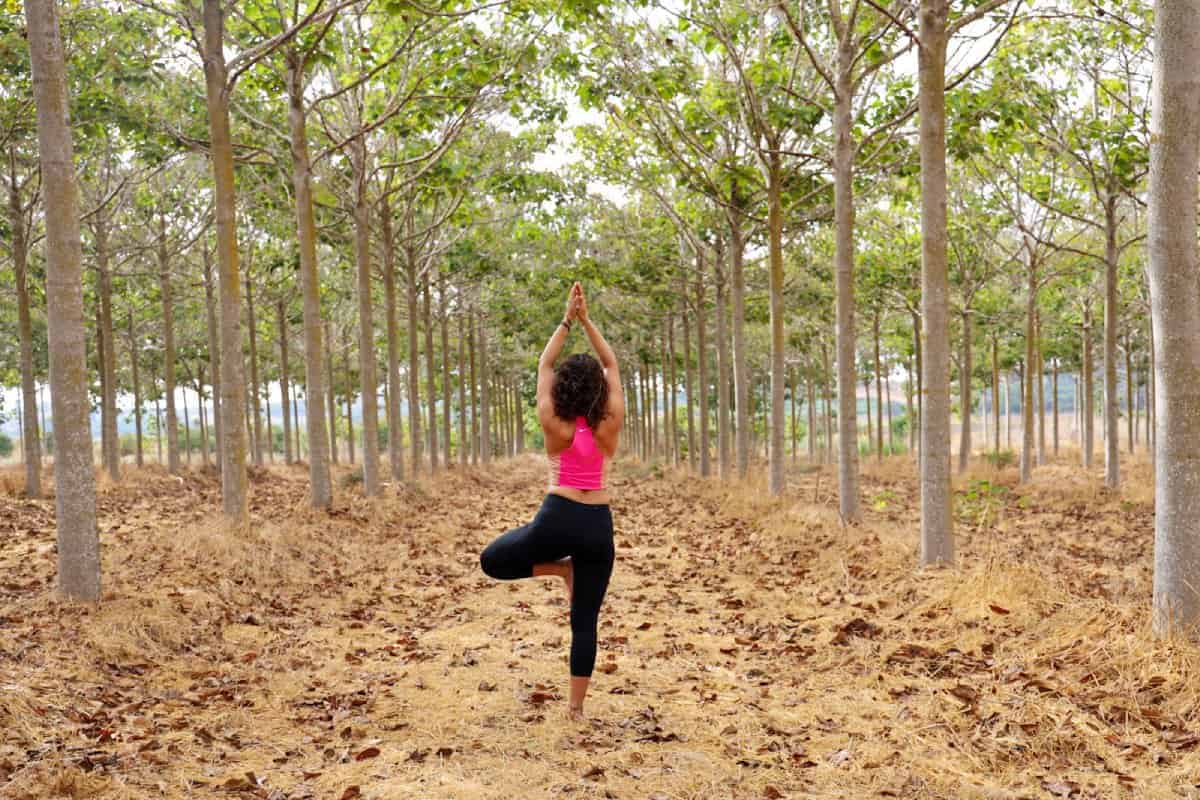So, you’ve realized how good yoga is for you and you want to establish a regular practice? Congratulations! The first thing you might be asking yourself is what the best time for yoga is.
Whether you choose morning, afternoon, or evening yoga, each has its own advantages. Let’s look into their benefits.
Contents
Why practice yoga in the morning?

Many yoga traditions prescribe practicing yoga in the early morning before the sun rises. However, how early or how late in the morning you want to practice is entirely up to you and your body’s rhythms.
Traditionally, practicing before sunrise is considered to have a greater connection with divine beings and helps with mental strength and clarity. But for all those folks out there who do not even dream of speaking for the first hour of their day, late mornings might be a better option.
What’s great about practicing yoga in the morning is that it’s invigorating, refreshing, and grounding. It energizes your mind and your body.
Also, it:
- removes morning stiffness,
- helps with digestion and metabolism,
- increases your concentration,
- gives you extra energy,
- and releases happy hormones.
Morning yoga sets the tone for the rest of your day. By setting your intention in the beginning of the practice, you are taking control of the day ahead. You are the one choosing how you want your day to look instead of allowing circumstances to control your moods.
For most people, it’s easiest to add yoga to their morning routine, before all the hustle and bustle of the day. Let’s say you have a family or a partner. Early mornings are a time when you still have some peace and quiet to yourself before everyone wakes up. And it’s also a good time to practice because you haven’t eaten yet and one thing to know about yoga is that you should do it on an empty stomach.
Best asanas to practice in the morning

The best asanas to include in your morning yoga session are sun salutation, vinyasa flow, cat-cow, bridge pose, wheel and other chest openers, and inversions.
Why do yoga in the afternoon?
The afternoon is a great time to do yoga to combine the best of your morning and evening practices. It helps you reset the day and fix your energy levels. Let’s say you’ve had your share of stress during your work hours. Doing yoga after work is helpful for releasing any unwanted moods and emotions so that you don’t take them home with you to your family.
It helps your change the pace of your day and gives you back control over your day. You get to change the state of your mind and body in any way you want. You need more energy? Yoga’s got your back. You are too fidgety, anxious, and need to calm down? Practicing appropriate asanas has got you covered.
Also, you may be less stiff in the afternoon than morning because your muscles have already warmed up. So, it’s easier for you to do certain asanas and work on your flexibility more.
Best asanas to practice in the afternoon
Perhaps in the afternoons, you feel less energetic than at the beginning of the day. In that case, practicing more invigorating asanas such as backbends and Sun Salutations with jump-throughs might be great for you.
But if you feel you need to wind down after a long workday, then this is a great time for more gentle yoga such as yin and restorative.
Why do an evening yoga practice?

The traditional view is to practice yoga early in the morning or in the evenings. B. K. S. Iyengar, the founder of Iyengar yoga, says that evening yoga practice is great to let go of the day’s fatigue and restore calmness. An early evening yoga session is also good if you’re a night owl – let’s face it, not everyone is a morning person and that’s totally fine.
In a study named “Rapid stress reduction and anxiolysis among distressed women as a consequence of a three-month intensive yoga program” done by Andreas Michalsen, et al., participants attended 2 weekly 90-minute evening yoga classes. Results showed great improvements in the perceived stress, anxiety levels, well-being, vigor, fatigue, and depression of the participants. So, that’s how powerful your evening yoga practice is.
The evening yoga routine helps you de-stress and release everything that happened during the day. You can shed away all the tension, turbulence and stress of the day and come back to yourself. It’s a great way to reconnect with yourself and have a restful sleep.
Evening yoga session is also a great addition to your bedtime routine instead of watching the TV or scrolling on your phone. Indeed, if you’ve been looking for a healthier evening routine, adding yoga to it might just be the thing for you. Not to mention that it is proven to help fall asleep faster and with insomnia.
Practicing yoga in the evening activates your body’s nervous system which is in charge of relaxation. It helps your mind to calm down and ensures you end your day in a positive way. The popular saying goes “Never go to bed angry.” We want to add – never go to bed not feeling at peace. Lifting your mood before you fall asleep guarantees that you will wake up feeling refreshed and energized.
The important thing about practicing yoga in the evening is that you should go for slower, calming asanas instead of more stimulating ones because they can leave you feeling hyperactive and make it hard to get a good night’s sleep.
Best asanas to practice in the evening

It’s entirely up to you
The best time to practice yoga depends on your schedule, circumstances, needs, and your energy levels.
If you have a house full of people running around, this might not be suitable for you to do your yoga practice in peace.
If your energy levels and motivation are low, then there’s no point doing something you’re not keen on and can’t wait to finish – the key to doing yoga is to enjoy it. This is your special time of the day that you get to dedicate to you and nobody else but you.
And what is also great is that the more quality time you give to yourself, the better you will be to those around you. To quote one study on the effects of yoga on relationships: “I Am a Nice Person When I Do Yoga!!!”
Also, choosing the right time to do yoga depends on your needs. What is the time of the day most critical for your well-being? When do you need to tend to yourself the most? Listen to what your body and mind have to tell you and choose accordingly.
And we should definitely say something about the power of a great yoga teacher. If you’ve found one that gives just the perfect yoga classes, then it makes sense to change your schedule around to make it to those classes.
As you can see, there are many factors involved when deciding on the best time to practice. So, the best thing is to experiment with different times of the day and see what results in your yoga practice offers you.
Consistency is key
Whichever time to do yoga you choose, the key to reaping the maximum benefits is consistent practice. So, you should find a time in the day that regularly suits your schedule and your mood best. Yoga should blend into your schedule instead of trying to squeeze your daily schedule around your yoga practice.
Do note that if you change the time to practice yoga too often, you are missing out on the sense of stability it is meant to offer you. However, if your schedule is too unpredictable, some yoga is better than no yoga!
If this is the case, try at least to maintain some structure in your yoga session. Depending on your needs, you may change the focus of the practice but try to keep some consistency within it. For example, the warm-up or the way you end your session (with Shavasana) may always be the same.
FAQ
How many times a week should I do yoga?
You can’t go overboard with your yoga practice. Do it as much as you can. But of course, if circumstances do not allow for more, 2-3 times a week is good enough.
How much time should I spend practicing yoga?
Usually, a yoga teacher gives classes that are 60, 75, or 90 minutes long. But even a 20-minute-long practice offers benefits. Even just a couple of your favorite poses go a long way toward you feeling better.
As James Clear, self-development writer and the author of the #1 New York Times bestseller ‘Atomic Habits’, says, making positive actions even for shorter periods of time will produce positive results. So, if you can’t do a lot, do a little bit.
What time should you not do yoga?
Basically, the only time that yoga should be avoided is on a full stomach. So, avoid practicing it 2 hours after a meal.
Which is the best time for yoga for weight loss?
Interested in practicing yoga to lose weight? According to Balaji PA, Smitha VR, Sadat AS. Effects of yoga – pranayama practices on metabolic parameters and anthropometry in type 2 diabetes. Int Multidiscip Res J. 2011;1:1–4., yoga has been proven to help with managing obesity.
Morning yoga practice along with pranayama for 1 hour a day for 3 months continuously showed a decrease in body weight, body mass index (BMI), and waist-hip ratio.


